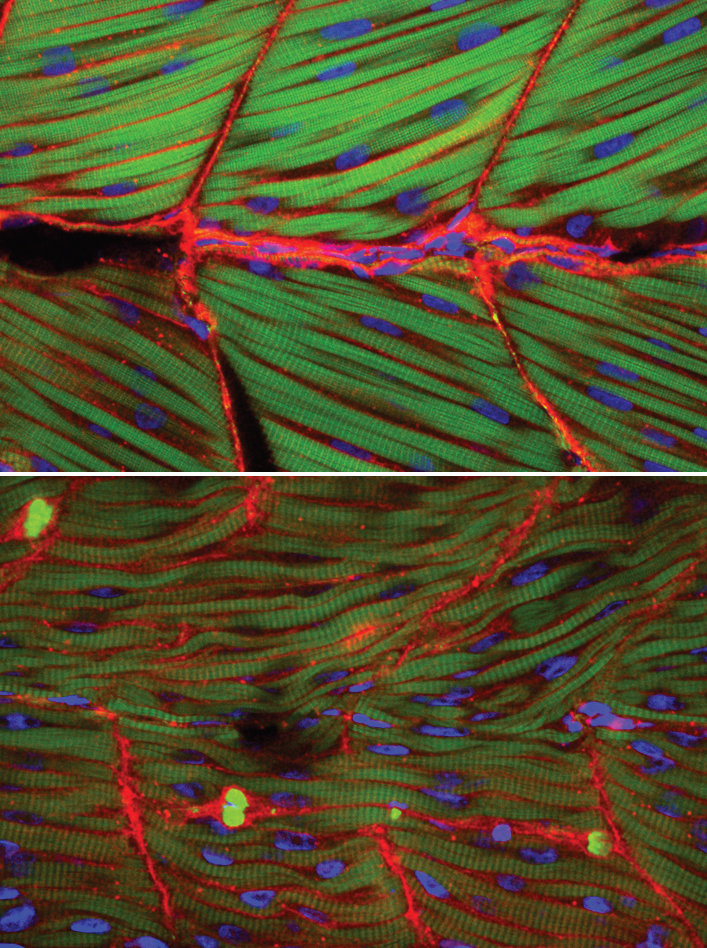Rare muscular dystrophy gene mutations discovered

The discovery of the gene mutations in causing the syndrome brings the number of genes linked to the syndrome to seven and now explains 50 per cent of cases of the disease in the patient cohort of Nijmegen Medical Centre. The role of the gene, known as ISPD, in Walker-Warburg syndrome was identified by combining genetic investigation in affected families and their offspring with disease modelling in zebrafish.
“Until now we have only been able to explain the genetic basis of just 35 per cent of this distressing disease. By discovering the role of ISPD, we have found the second most common causative gene mutation accounting for additional 15 per cent of all babies born with this muscular dystrophy.”
Professor Hans van Bokhoven from Radboud University Nijmegen Medical Centre and co-senior author of the research
The researchers used a genetic mapping strategy in some affected children who did not have mutations in any of the six previously known causative genes. They found an association with the ISPD gene in two children. While this suggested that ISPD was likely to be linked to the syndrome Supporting strong evidence came from an independent approach using next-generation DNA sequencing and stringent filtering of candidate genetic variants. A specific mutation was identified in the ISPD gene. These results led to the discovery of additional mutations in ISPD from another six families with children affected with Walker-Warburg syndrome.
“ISPD was shown to be strongly associated with the syndrome. However, the function of ISPD has not been studied in vertebrates. Experimental evidences from loss of function of the same gene in vertebrate animal models will shed light on the pathological mechanisms underlying Walker-Warburg syndrome.”
Dr Yung-Yao Lin from the Sanger Institute, says co-senior author
To do this, the team chose to use zebrafish as a vertebrate animal model because the ISPD gene is evolutionarily conserved between humans and their fish counterparts. They used a gene silencing technique that prevented the ISPD gene from producing its normal protein and found that the fish displayed the same symptoms as babies with Walker-Warburg syndrome. Furthermore, they show that ISPD may have adopted a role involved in the sugar modification of dystroglycan, a central component of a big protein complex governing the integrity of muscle and other tissues.
“The results of silencing the ISPD gene in zebrafish – hydrocephalus, muscular dystrophy and eye abnormalities – provided definitive proof that it plays a role in disease pathogenesis. The key questions now are ‘What does this gene do regarding the sugar modification of dystroglycan?’ and ‘How does a mutation of it cause these terrible symptoms?’ We are now carrying out further investigations to elucidate the biological pathways involving ISPD in vertebrates.”
Dr Derek Stemple Head of Mouse and Zebrafish Genetics from the Sanger Institute
More information
Participating Centres
A list of participating centres can be found in the paper.
Publications:
Selected websites
Radboud University Nijmegen Medical Center (RUNMC)
The Radboud University Nijmegen Medical Centre advances human knowledge by conducting biomedical, translational and clinical research in order to improve wellbeing. Our key strength is medical life-sciences and clinical practice, with an impressive infrastructure comprising state-of the-art technology platforms and (translational) research facilities. The Radboud University Nijmegen Medical Centre (RUNMC) is a centre for research and health care employing nearly 10,000 staff and boasting 3,000 students all working together for the future of the health care and medical sciences.
The Wellcome Trust Sanger Institute
The Wellcome Trust Sanger Institute is one of the world’s leading genome centres. Through its ability to conduct research at scale, it is able to engage in bold and long-term exploratory projects that are designed to influence and empower medical science globally. Institute research findings, generated through its own research programmes and through its leading role in international consortia, are being used to develop new diagnostics and treatments for human disease.
The Wellcome Trust
The Wellcome Trust is a global charitable foundation dedicated to achieving extraordinary improvements in human and animal health. We support the brightest minds in biomedical research and the medical humanities. Our breadth of support includes public engagement, education and the application of research to improve health. We are independent of both political and commercial interests.


